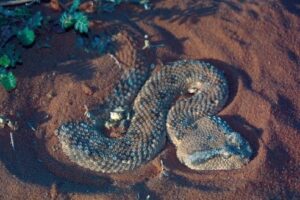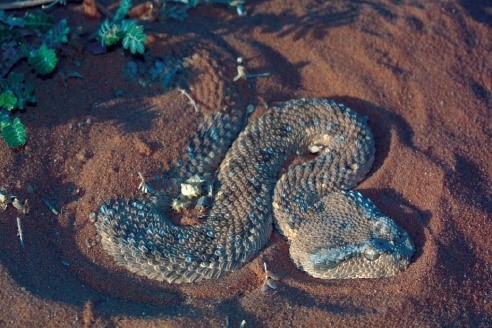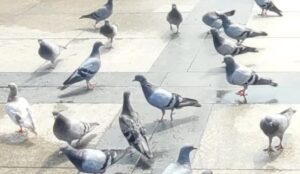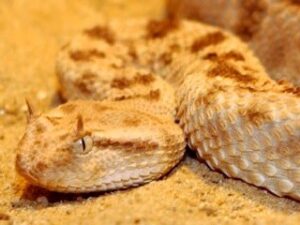General Description
|

Credit: Zuhair, Stümpel, and Joger |
- The horned snake has two movable front fangs.
- The two horns of the snake are soft, flexible leather that can easily be bent.
Life Cycle and Common Characteristics
- The diet of this snake primarily consists of rodents, insects (particularly beetles), and lizards.
- The horned snake can move its two fangs forward outside the mouth and inward to insert them into its gums, and these two fangs help it quickly deliver the poison to the prey.
- The two horns of the snake are soft, flexible leather that can easily be bent, and they are not considered a weapon that it can use, while it can scare its enemies with it, and they may be to protect its big eyes from shocks.
- Snakes crawl sideways.
- Not all individual snakes have horns, and the horns are not related to the age of the snake. Both young and old have horns. It is likely that the horns are for male-only.
- It was noted that the horned snake is more ferocious and in self-defense than the one without horns.
Damages and Medical Implication
- It is considered one of the poisonous snakes whose bite must be avoided. It does not attack humans, and if you approach it, it escapes from you.
- If the snake is trapped, it turns around itself and rubs its scales against each other to make a sound to scare its enemies.




